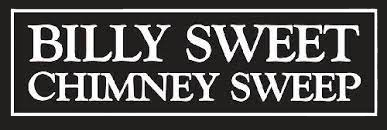January has the highest amount of house fires in a calendar year. Whether it’s from heat appliances, kitchen equipment, electronics, or clothes dryers, these fires account for an unnecessary loss of property and life each year. Not only does a high concentration of residential fires occur in January, but they also happen oftentimes overnight, while homeowners are asleep.
House fires are an unwelcome and dangerous surprise, but one that can be prevented. When they can’t be prevented, preparation can help save your life. Half the battle is remembering fire safety when using household appliances—especially your fireplace.
Your Safest Fire
You may have the most advanced, top-of-the-line fire appliance with the highest safety rating on the market, but if you don’t operate it correctly, and with safety in mind, it will not be safe. It will actually be dangerous.
- Know your appliance.
Whether you have a fireplace, stove, or insert, read your owner’s guide and get to know the parts. Not sure how to use a damper? Learn how the damper can help you light a fire and keep your family safe by using it properly. Your stove may have a shaker to drop ashes out of the fire box. It may have a hopper to feed pellets to the fire. Get to know your appliance BEFORE your first burn. - Burn proper fuel.
You should only burn properly seasoned wood in your wood insert, stove, or fireplace. Your gas fireplace should be connected to a natural gas line by a gas company. Your pellet appliance should only burn manufactured pellet products. Burning the wrong type of fuel in your fireplace can bring down efficiency, damage the system, and even raise the risk of fire. Your flue liner may not be appropriate or safe for all fuel types. Know your appliance, and burn the correct fuel for your appliance. - Use fireplace accessories.
Special, long-handled accessories can help you maintain your fire safely. You can purchase these accessories at a home improvement store and they should include a shovel, poker, and broom. While you’re at it, you can purchase leather gloves to protect your hands from burns and extreme temperatures. - Never leave a fire unattended.
Once a fire is burning in a fireplace, it shouldn’t be left until it is out. Never leave children unattended around a fire, and utilize glass doors, screens, and gates to prevent accidental falls and burns. - Dispose of ash periodically.
If ash is allowed to build up in the firebox, it can become crowded, causing hot ashes, coals, and even flaming logs to fall out of the fire. Dispose of ash safely and leave a thin layer of ¼ inch to insulate and protect the bottom of the firebox. - Install smoke alarms and carbon monoxide detectors.
Check the batteries regularly, and practice fire drills with your family. Plan an escape route (that includes 2 ways out) and practice it with your entire family, including children.
Contact Us Today
It’s important to remember that firefighting is for firefighters. It’s not a job for homeowners with fire extinguishers. If you have a flue fire, you won’t be able to access it before it puts your life in danger. The best way to keep your family safe throughout winter is to practice fire safety, make sure your chimney system is clean and safe, and prepare for an emergency, just in case. It may save your life.
Call Billy Sweet Chimney Sweep and let us help you have your safest fire this winter.
